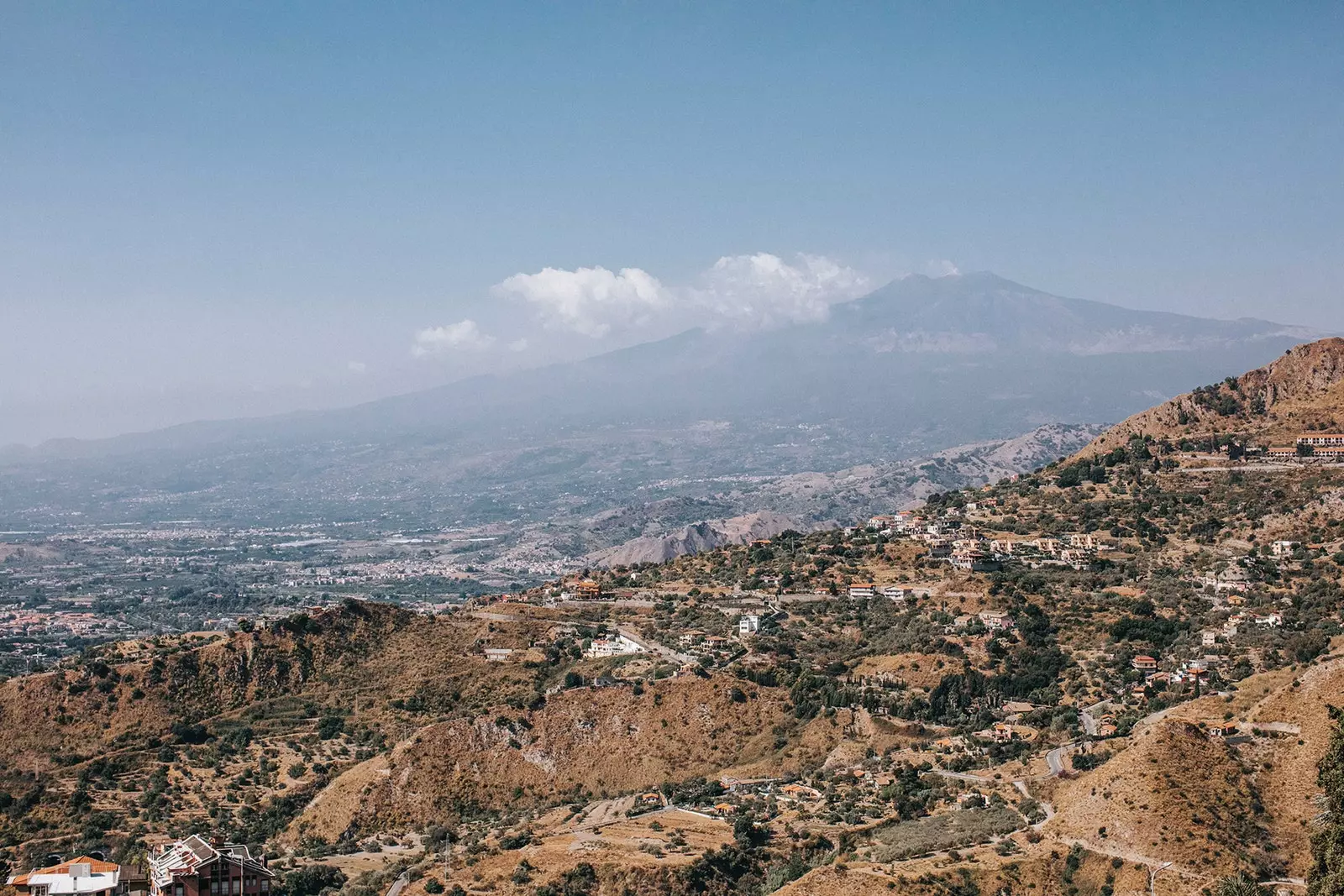
To get to know Etna, you need to know the towns around it
If we see the Earth as a living being, we can imagine find ourselves in their skin and understand volcanoes as the few places where this layer is renewed.
That's how we get into Etna, the highest active volcano on the Euro-Asian plate. we approach him from Catania, located east of the island of Sicily. It was founded on top of a hill by the Greeks in 729 BC, and Today it still smells of the seas of antiquity , remembering the civilizations that once inhabited it. Phoenicians, Arabs, Romans... Who sets the pace for all of them is Etna –or Mongibello in Sicilian–, permanently smoking and seeping like a postcard in many of the streets.
Catania has been destroyed seven times at the whim of the volcano , according to account Carmelo Giuffrida. "We have a huge catalog of eruptions." The geologist he is convinced that Etna does not like routine. “ One of its characteristics is to do what you want. He is an anarchist, or an artist”.
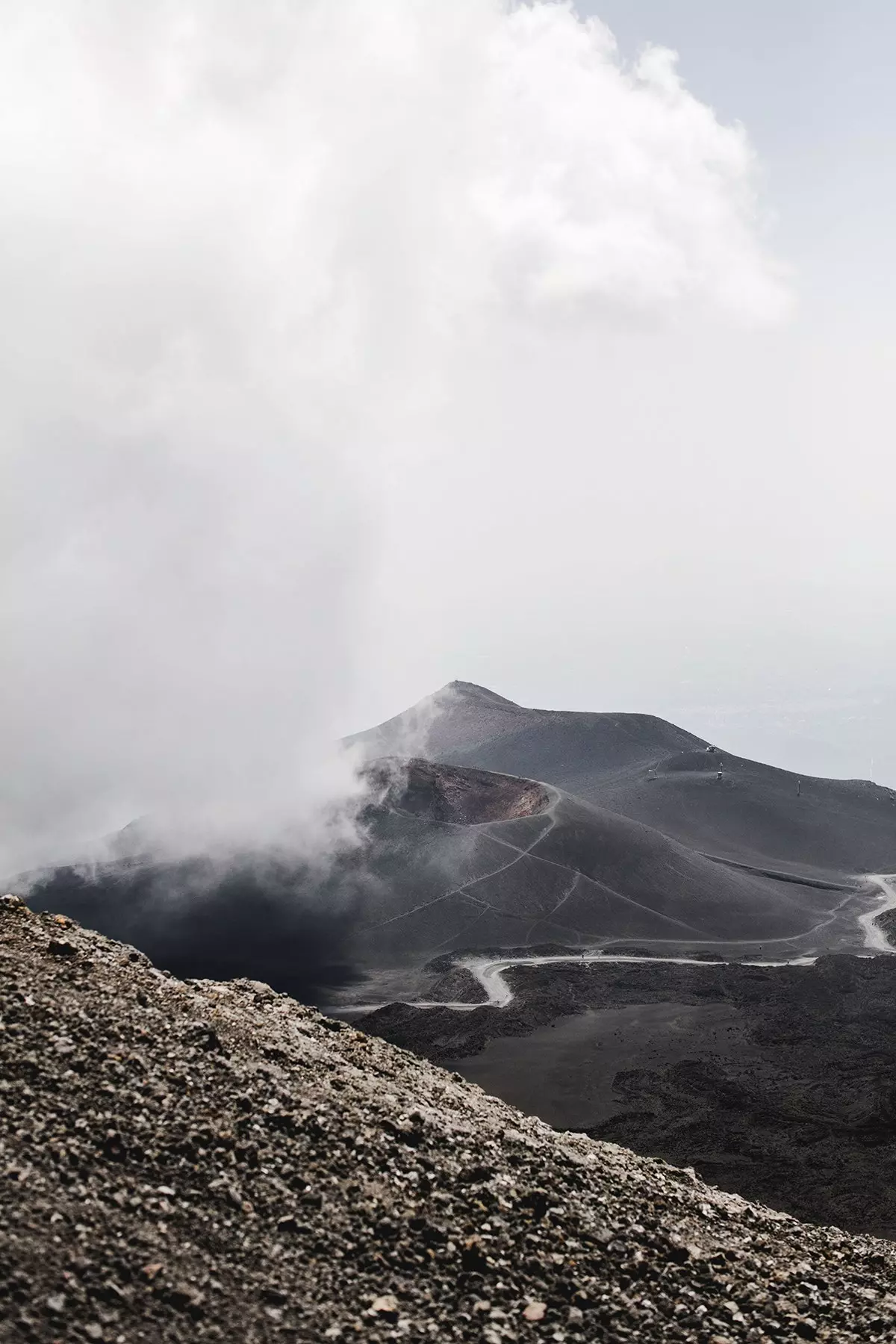
The extreme aridity of Etna
We see the first panoramas from Nicolosi, access door from the south side. We stop in front of a pine forest that covers the crater through which the catastrophic eruption of 1669 emerged. . We keep going while lists the five summit craters and over 300 vents that exist on the flanks.
“If we compare the history of the Earth with a movie, we live in a frame and volcanoes are places where transformation energy is seen much more ”.
We tour houses razed by Etna, buried in the ground and from which only the roof stands out, cellars, quarries and arid ridges until you reach the Sapienza Refuge, the highest point that can be accessed by car.
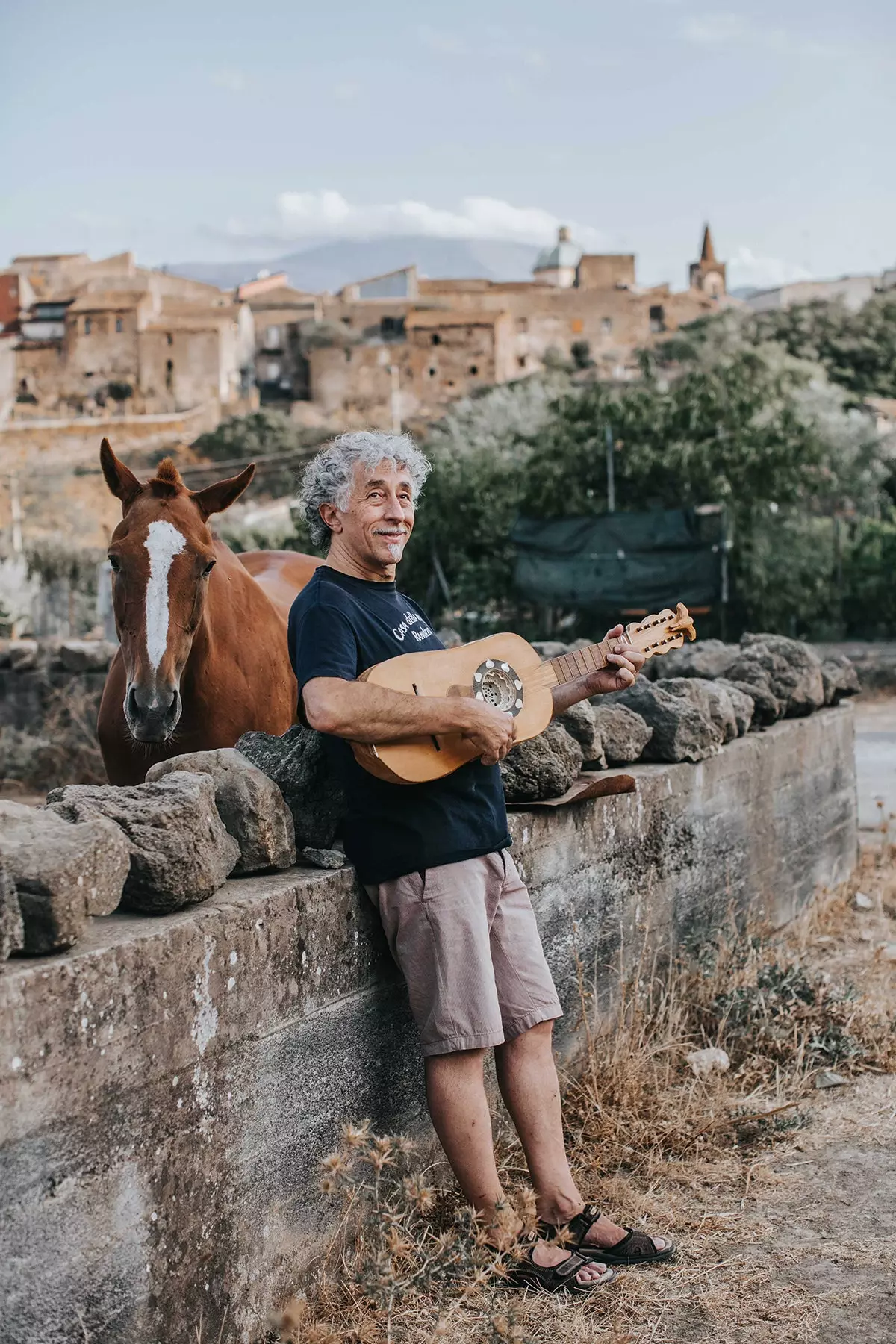
The musician Giuseppe Severini in Randazzo, the closest town to the crater of Etna
We begin to understand the disasters and luck of being next to Etna: whoever is on the mountain lives tied to the stone. Our route continues towards Belpasso – beautiful step in Italian –, a name that was acquired after the 1693 earthquake.
Playwrights like Nino Martoglio were born in this town and turned it into an exponent of Sicilian theatre, in which Greek mythology is mixed with a gesture typical of volcanic cultures: the actors of Etna impose their voice and body like lava takes root in the earth.
Cettina Muratore and Mario Morabito directed what was the town's first theater company, the Gruppo Teatro Città di Belpasso . We meet in the cemetery to search for the remains of Antonino Russo Giusti , another of the most representative authors.
All the niches are black, like the color that invades Etna. Cettina moves quickly as she points to the various stones. “These are really old lava ones, this one is more modern, you can see it because of the clarity and because of the style”. They are perfectly known.
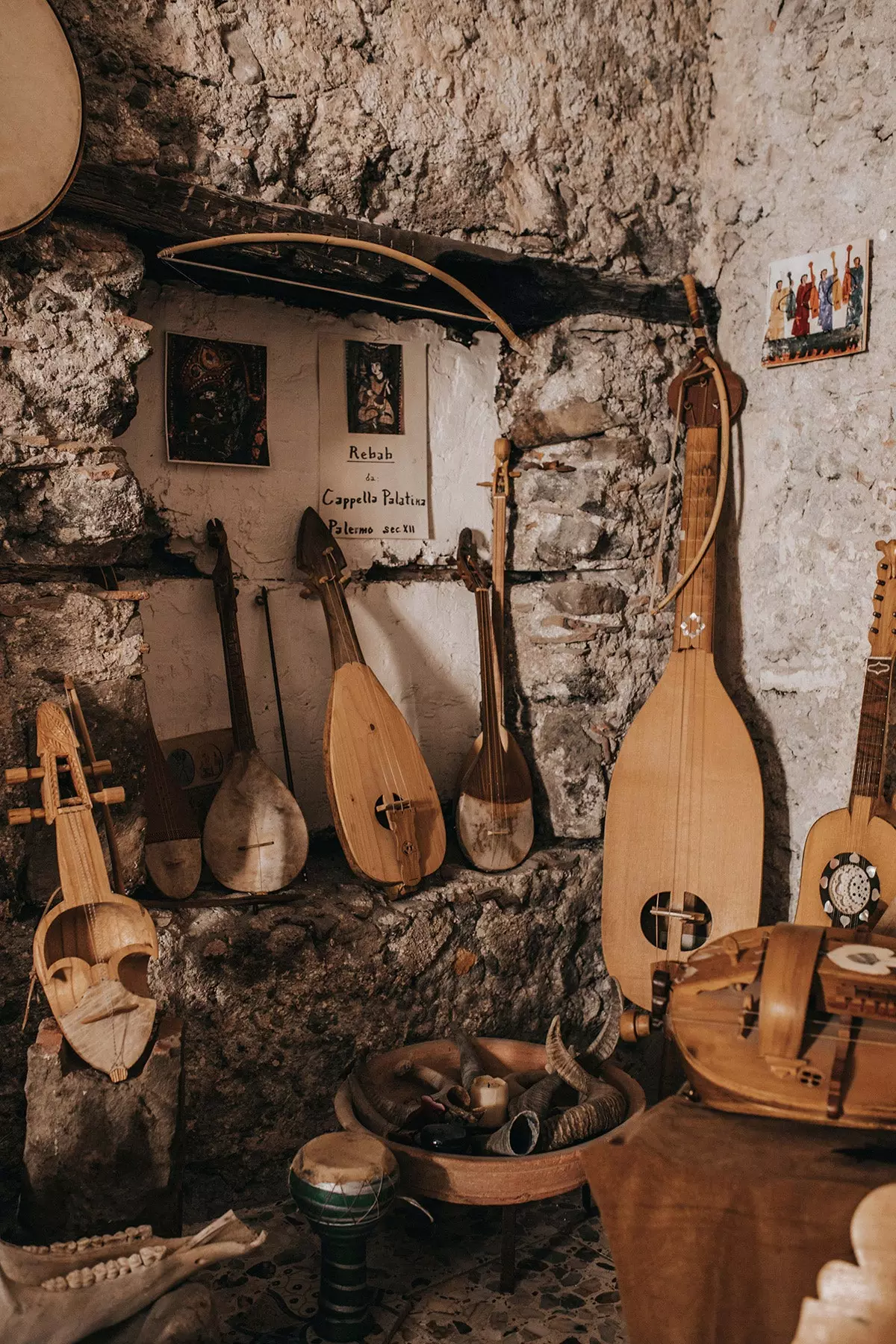
Medieval instruments made by Giuseppe Severini
Later, Mario –who is also a sculptor– invites us to his workshop . In it, he confesses which stone he chooses to work with. "The one on the surface of the earth cools faster and is already modeled." He speaks passionately, moving his arms as if he were reciting a verse in Sicilian, while he lets us play a Maternity.
“I am not going to search for a perfect figure, otherwise I would not use this stone and I would work in basalt or marble”. We say goodbye to the streets of Belpasso, where legends abound, with lava masks and other sculptures that are part of the Città delle 100 Sculture, the City of 100 sculptures, a project organized by sculptors' symposia –called Belpasso, Oro Nero dell’Etna(Belpasso, Black Gold of Etna) – to cover the town with works of art.
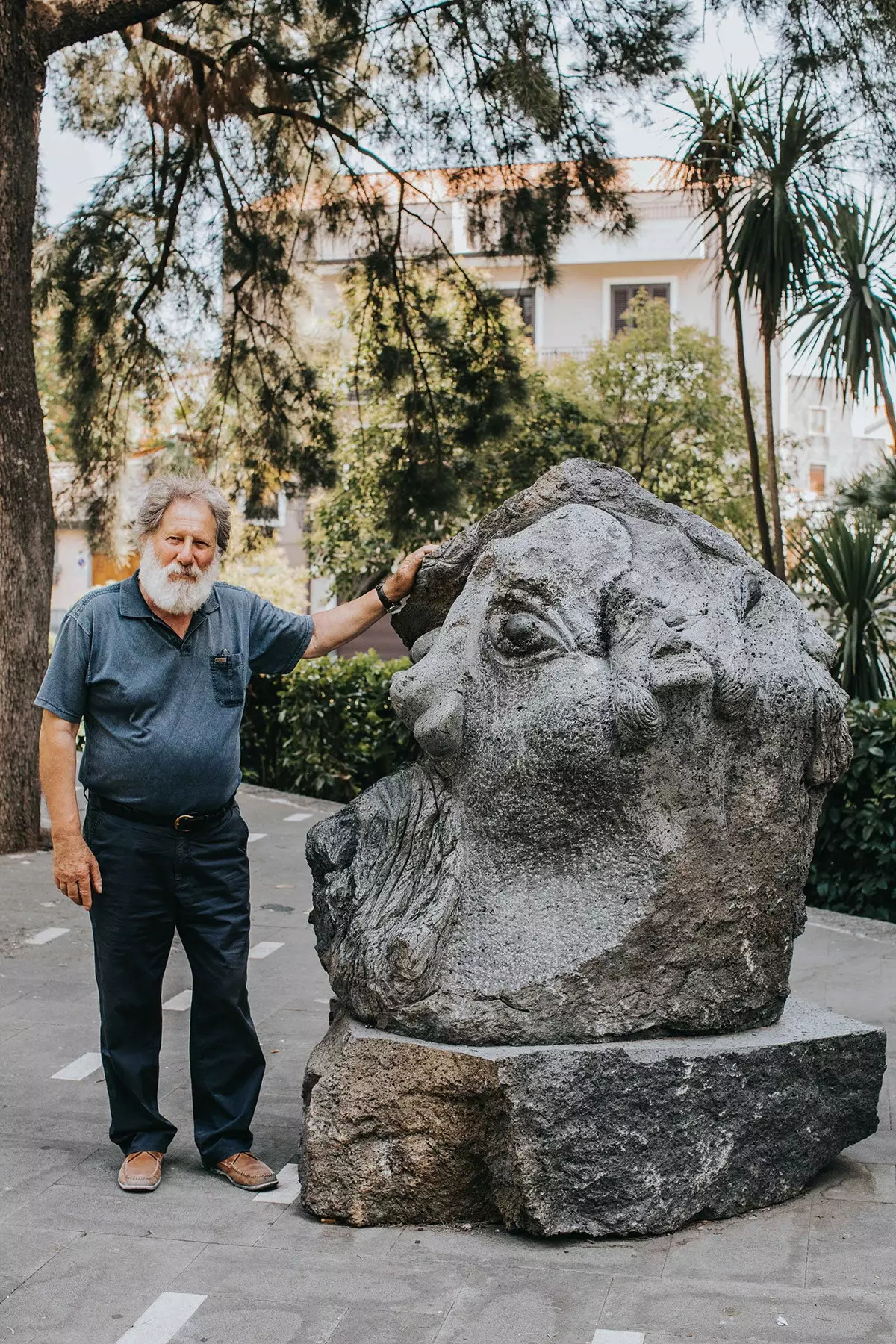
Mario Morabito and one of his works
We arrive in Bronte, famous for its pistachio harvest and for the Gullotti . For six decades, this family guards and shares a private collection with more than three hundred Sicilian carretti pieces_._ This wooden cart started out as or a means of agricultural transport between the 19th and 20th centuries and became a symbol of folk iconography of the island for the artistic and historical manifestations recorded in it.
in bronte Nino Russo awaits us, a tender 79-year-old poet that although he now lives on the other side of the volcano grew up next to the river Simeto, whose flow is born very close in the Nebrodi mountains. Several of his verses are dedicated to its waters, which we discover as one of his texts tells us.
Il Rovittese is set in a lava zone and written largely in dialect. "There are sounds that are in all of Sicily but not in Bronte," he says. "Our dialect is special, since it was an isolated town."
However, the only language heard is that of Simeto . In Bronte not a soul moves, just a little sound in the middle of the afternoon when you cross the Circumetnea, the railway that started out as a steam train in the 19th century and connected the towns with Catania. Now, he continues to go around Etna, visiting pistachio plantations, lava formations and citrus fields.
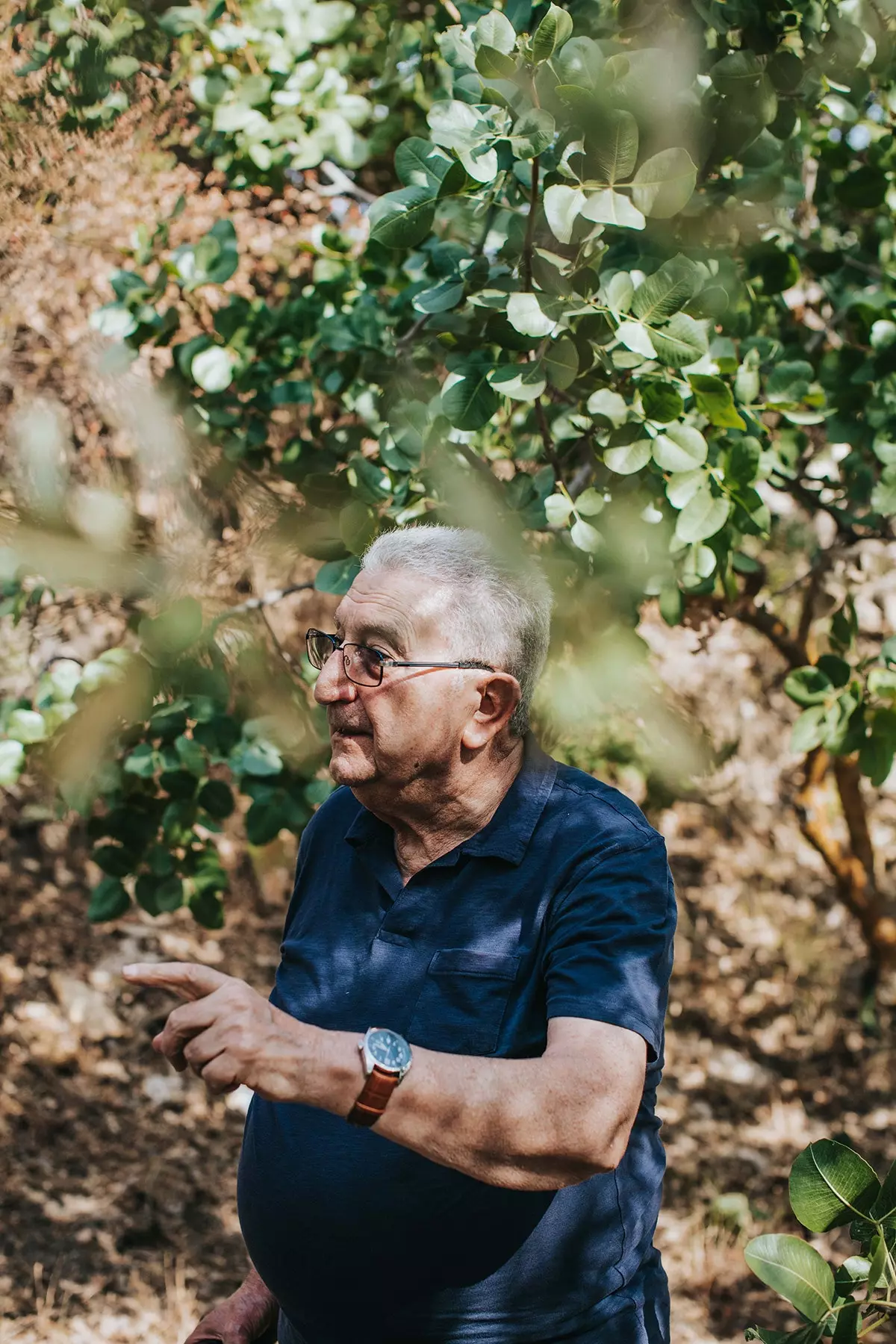
The poet Nino Russo, one of the few inhabitants of the little town of Bronte
Our next target is Randazzo, a medieval town where everything is past. The streets, the churches, the portals and the roofs are dominated by the dark tone of the lava. Its about the closest city to the summit of the volcano.
Giuseppe Severini, an artisan musician that his workshop has in the area, adds a bit of color to the panorama. In his house everything is firewood, remembering that in this place the work of cabinetmakers is tradition. In his workshop we found instruments from another era : drums, bells, lutes from the Middle Ages... he has them organized by types of firewood : fir trees, pines, olive trees, cypresses, red salces.
“Each one gives its own handling to the instrument, also a resonance”. He himself builds the pieces and, to achieve this, he goes to Etna in search of materials.
The chestnut is the most precious, as its hard bark is perfect for borders. "It grows with the virtues of the volcano, a land that contributes more acid and metals to the soil, designing a resistant firewood", he says. Touching her, he has something wild. It is polished, covered with varnish or a union of honey and oil, but it does not have a sweet mood. A bit like Etna itself.
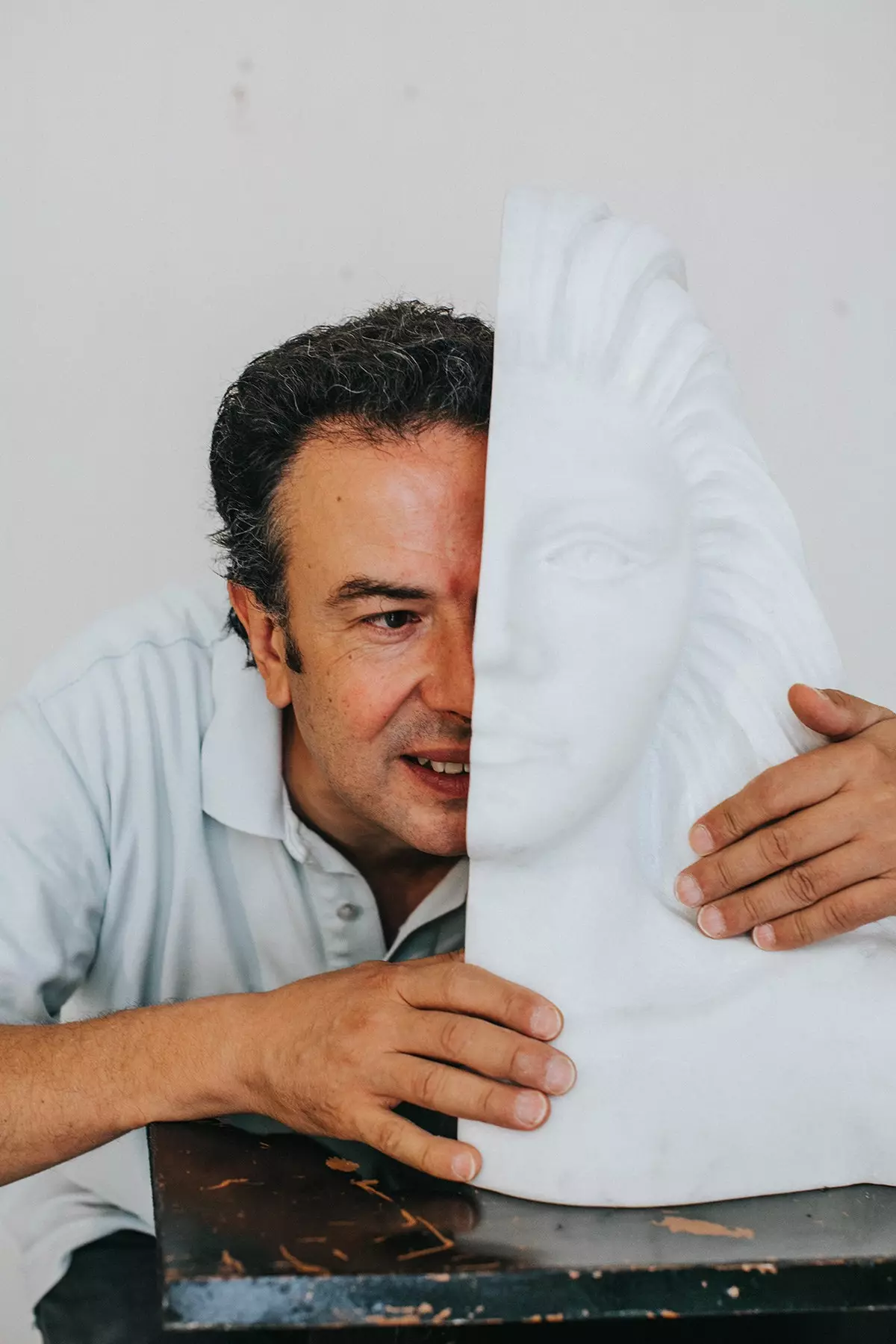
Sculptor Vito Guardo hiding behind one of his volcanic stone nymphs
After going through some vineyards, crossing Linguaglossa and towns that run between narrow routes, we arrive at Aci Trezza , old fishing village. Its name was given by the Aci river, which disappeared due to an eruption.
We walked along the boardwalk with Vito Guardo , a man who is more tired of words than sculpture. "The sculptor does not make poetry, he gives the opportunity to do it," he says while describing one of his greatest works with a small mouth. Nascita di Venere is a 2.30 meter tall nymph that began as a huge block of lava stone and ended up welcoming cars passing the entrance roundabout in Gravina di Catania.
However, many afternoons like today, Vito resorts to the sea. He likes to see the Faraglioni –the giant basalt rocks that, according to legend, one day Polyphemus threw against Ulysses– and say: “Each civilization lives from the stone it finds”.
With sunset behind us and a smell of marinated lava, we return to Catania. In little more than a circumference of 140 kilometers we have been in many places. And in many times.
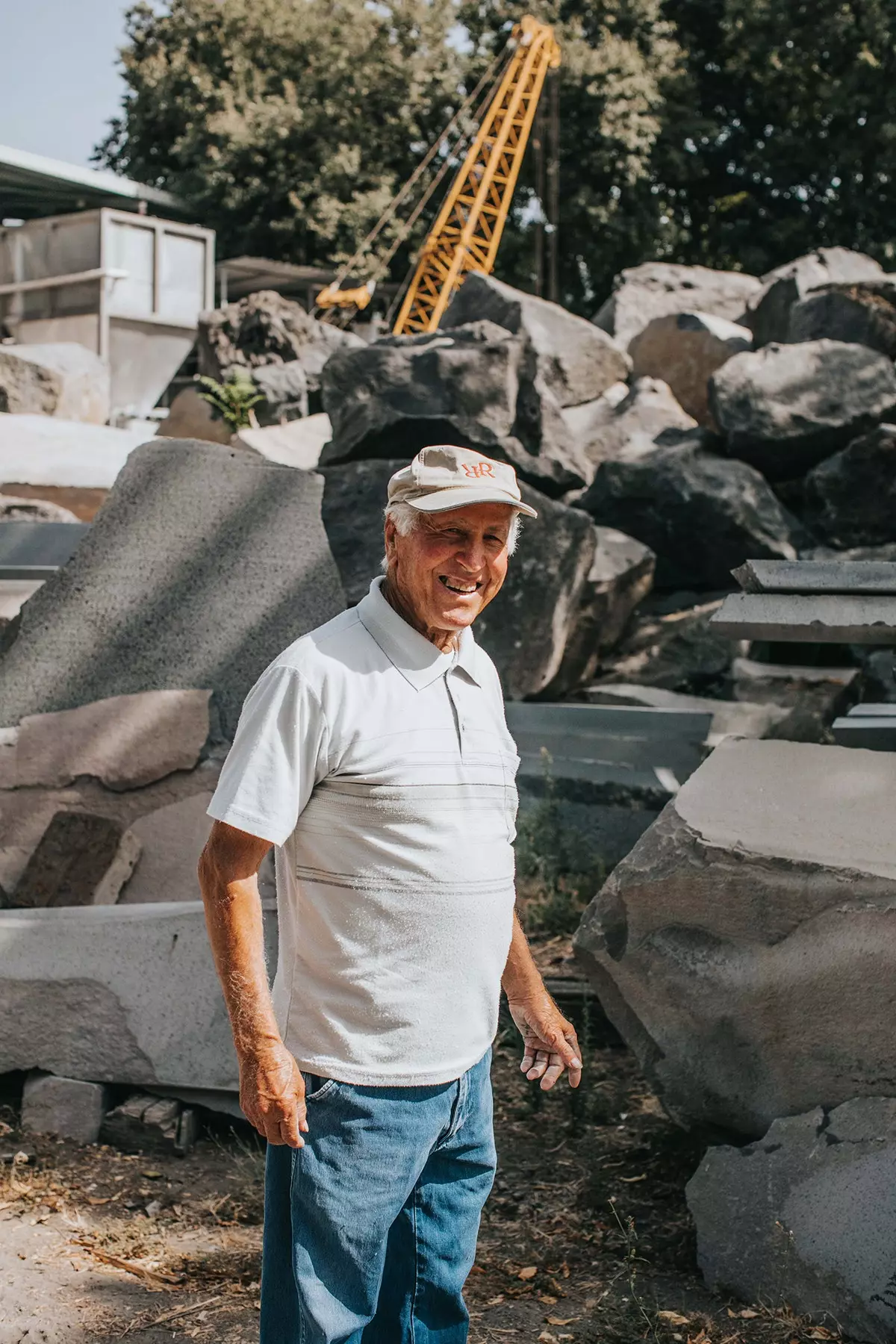
Alfio Rapisardo
***** _This report was published in **number 119 of Condé Nast Traveler Magazine (July-August)**. Subscribe to the printed edition (11 printed issues and a digital version for €24.75, by calling 902 53 55 57 or from our website). The July-August issue of Condé Nast Traveler is available in its digital version to enjoy on your preferred device. _
